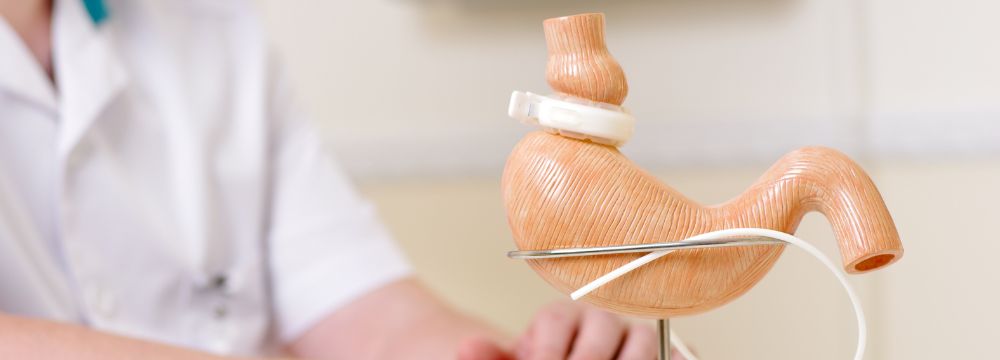What Happened to The Lap-Band?

If you were considering bariatric surgery in the relatively recent past, you almost certainly came across the laparoscopic adjustable gastric band. This surgical system goes by the brand name Lap-Band. FYI, there was also a competing band known as the Realize Band, which is no longer on the market. Gastric banding was a revolutionary procedure when it was first devised. For one, it didn’t require any stomach stapling and was adjustable and reversible. Patients who were not losing enough weight could have saline (saltwater) inserted into the band and tightened, while those experiencing symptoms from a tight band could have it loosened with a simple procedure to remove some liquid. This was revolutionary compared to the permanence of most stapled bariatric procedures.
Of course, there were some immediate drawbacks, the biggest of which was that the patient could not lose as much excess weight as with a stapled procedure. For hundreds of thousands of patients, this was a trade-off they were willing to make, and they could have the band knowing there was always a way out. In time, however, you may have seen that the gastric band has largely left the bariatric surgery scene with few surgeons performing it.
So What Happened?
A confluence of changes and advances in bariatric surgery and our knowledge about gastric band complications ultimately relegated this procedure to a niche tier of weight loss surgeries. First, stapled methods have been refined, are safer, and are more successful than ever. This includes the gastric sleeve, gastric bypass, duodenal switch, and some sub-variants.
Second, and probably most importantly, we noticed that band patients were experiencing an unexpectedly high number of complications in the long term. Because it is an implanted medical device, there is a higher risk of failure as the mechanics of the band begin to wear down or the band’s interaction with tissue damages the anatomy. Some patients experienced what is known as band erosion, where the band begins to erode into the tissue of the upper stomach. The band could also slip out of place and stop offering the full weight loss effect. The injection port that introduces and removes saline could flip or detach, requiring additional surgery. The list goes on. Today, one of the most performed secondary bariatric procedures is converting the band to a stapled procedure like a sleeve or bypass.
Does a Band Make Any Sense?
As mentioned above, there may be some particular use cases for the gastric band in certain patients. However, stapled bariatric surgeries that have shown excellent safety and efficacy are the best way to go for most. Of course, this will all be discussed during your consultation with Dr. Chang.
One Last Piece of Advice
When you start researching bariatric surgery, you’ll notice many surgical options – some of which were unavailable to us just a few years ago. The decision as to which surgery to choose can therefore be rather tricky. We encourage you to research online and ask other bariatric patients about their experiences. However, we ask that you come to your consultation with an open mind. There are benefits to specific procedures over others, depending on your health circumstance and goals. For example, patients who have poorly controlled diabetes or gastroesophageal reflux may be best served with a gastric bypass. On the other hand, gastric sleeve patients may new onset gastric reflux/heartburn after the procedure. Again, come to us with an open mind to discuss the options and find the most suitable procedure.
For appointments, and to learn more about our practice, we first encourage you to watch our online seminar. If you are calling us about a revision from a gastric band, you don’t need to watch our online seminar, and you can call the office directly to make a consultation. In the meantime, we wish you the best of luck, no matter your decision.

